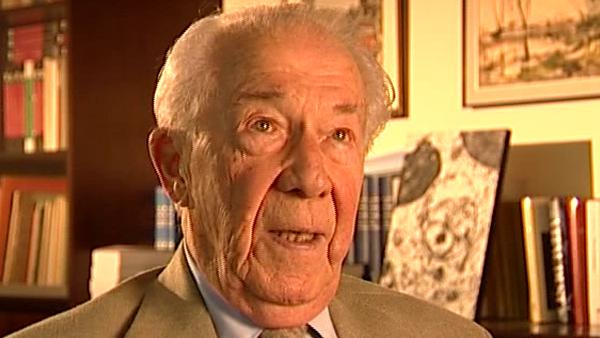NEXT STORY

Surprising results of the first fractionation experiment
RELATED STORIES

NEXT STORY

Surprising results of the first fractionation experiment
RELATED STORIES


|
Views | Duration | |
|---|---|---|---|
| 31. Using centrifugal fractionation to locate enzymes | 162 | 03:29 | |
| 32. The first fractionation experiment | 166 | 03:52 | |
| 33. Surprising results of the first fractionation experiment | 170 | 04:14 | |
| 34. Experiments resulting from the 2nd International Biochemistry... | 143 | 02:21 | |
| 35. Experimenting with phenolphthalein | 118 | 03:08 | |
| 36. George Hogeboom and Walter Schneider | 144 | 04:08 | |
| 37. Using Jesuit logic to solve a problem | 323 | 01:39 | |
| 38. Three possible explanations for our findings | 133 | 02:30 | |
| 39. Acid phosphatase: A new kind of particle | 133 | 06:01 | |
| 40. Experimenting with acid phosphatase | 117 | 04:41 |


On December 16 1949, we did our first fractionation experiment. And that experiment revealed that glucose 6-phosphatase, the enzyme we were interested in, was most probably situated... associated with the micro salts. I mean, a large fraction of the activity came down with the microsomal fraction and the rest could be explained by contamination. It was a very crude technique obviously. So we had... this in fact was not unimportant because microsomes were under discussion at that time; not everyone believed them to... to actually be a true cell... well, they were a true cell component, but an individual cell component – they thought it might be pieces of mitochondria. So that... this more or less established the microsomes as a bona fide cell component. Now, it turns out that in doing the biochemical work we had differentiated... distinguished glucose 6-phosphatase... the specific glucose 6-phosphatase from an unspecific enzyme that's also present in liver and has more acid pH optimum – glucose 6-phosphatase is an optimum pH six, and the one I'm talking about, acid phosphatase, has a optimum of pH five and is very unspecific ... acts on all sorts of components including glucose 1, glucose 6-phosphates, but also better glycerol phosphate, phenyl phosphate and others. We had no interest in acid phosphatase except showing that it was not glucose 6-phosphate. But having the techniques, we decided, well, why not analyse the fractions for acid phosphatase as well? Didn't cost much and here... here came, of course, the surprise. I still remember... I can see Jacques Berthet and his future wife, Lucie, coming to my office, ten o'clock at night, crestfallen. We blew it, was the message. We got some results and they make no sense. They made no sense in two ways. Basically, they had found only about one... 10% of the activity they expected to find. We had done this many times – we knew how much activity there was in a liver homogenate – and they had found about 10% of what they should have found. And when they added up the activities founded in the four fractions, they amounted to 200% – twice the amount – so the recovery was 200%. So it made no sense and they were very, very sorry. And I said, 'Never mind, it's too late... it's too late now to do anything about it; just put the fractions in the refrigerator. Next week we'll assay them again and we'll use fresh reagents just to make sure because, obviously, something has gone wrong.'
Belgian biochemist Christian de Duve (1917-2013) was best known for his work on understanding and categorising subcellular organelles. He won the Nobel Prize in Physiology or Medicine in 1974 for his joint discovery of lysosomes, the subcellular organelles that digest macromolecules and deal with ingested bacteria.
Title: The first fractionation experiment
Listeners: Peter Newmark
Peter Newmark has recently retired as Editorial Director of BioMed Central Ltd, the Open Access journal publisher. He obtained a D. Phil. from Oxford University and was originally a research biochemist at St Bartholomew's Hospital Medical School in London, but left research to become Biology Editor and then Deputy Editor of the journal Nature. He then became Managing Director of Current Biology Ltd, where he started a series of Current Opinion journals, and was founding Editor of the journal Current Biology. Subsequently he was Editorial Director for Elsevier Science London, before joining BioMed Central Ltd.
Tags: 16 December 1949, Jacques Berthet
Duration: 3 minutes, 52 seconds
Date story recorded: September 2005
Date story went live: 24 January 2008